Oh my. Oh my. Yes, this was SO wonderful. Can’t wait to eat the left overs, which will be gone by this evening. This is a quick dinner, as long as you have all the ingredients (shrimp, heavy cream, chives, parsley, FRESH lemon juice, angel hair and zucchini). If you love pasta, and shrimp – well, this dish is IT.
If you’re a regular reader of my blog, you’ll already know that I don’t make pasta very often. Even though I love it, it’s not good for my DH (Type 1 diabetic) and probably not all that great for me, either. But sometimes, for a splurge, we have it. And oh, am I ever glad. This dish was downright sensational. And EASY. Our granddaughter Taylor was here, and although she professes to not like fish or shellfish, she ate all but one shrimp on her plate. Her Dad, Todd, loves shrimp, so he had no trouble downing all of his own plus any of Taylor’s discards.
The inspiration for this recipe came from Simply Recipes, a blog I read regularly. As long as I’ve been reading food blogs, Elise’s has been one of my favorites. I love her easy-going writing style and her stories about her family’s recipes. I also love her recipe index. That might not sound so important to you – if you don’t write a blog, but recipe indexes aren’t automatically produced – nobody (that I know of) has written code to create recipe index entries when you post something new. I did use one for awhile, but it’s not meant for recipes and it was dreadfully hard to read. So when I go to Elise’s website I can easily find what I’m looking for. My recipe index here on my blog I created myself using the minimal amount of WordPress coding I know how to do, and I have to update it regularly. I do it about every 2 weeks or so. It’s tedious.
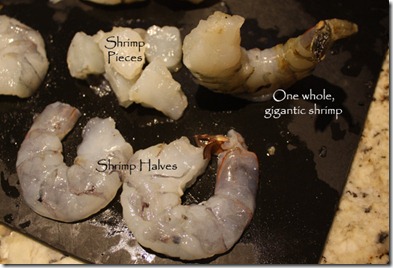 Anyway, back to shrimp and angel hair. The huge shrimp were defrosted first. Then I cut them up into manageable (and different) sizes. Some I chopped. Some I sliced in half lengthwise and then I left one whole for each serving.
Anyway, back to shrimp and angel hair. The huge shrimp were defrosted first. Then I cut them up into manageable (and different) sizes. Some I chopped. Some I sliced in half lengthwise and then I left one whole for each serving.
These shrimp were huge, and probably not the ideal size for this dish as the whole (or even the half) shrimp required a knife and fork. But the whole and halves looked so pretty on the dish.
Even though there is heavy cream in this, I was almost surprised when I looked at the nutrition analysis to see that to serve 5, each serving has 20 grams of fat. Not too bad considering . . . We had a green salad to go with this, which added a few grams of fat also, but not much. So this dish wasn’t as wicked as you might think. Just so you know . . .
Elise’s recipe didn’t call for zucchini. I added it just cuz I wanted some veggies in it (although to tell you the truth – and you can see from the photo – you can’t even SEE the zucchini). I chopped/sliced up the zucchini in tiny little pieces. I also added some additional seasonings (thyme, oregano). I used fish stock (or you could use clam juice too) because I have some of Penzey’s soup bases in my frig, but Elise suggests chicken stock, which would be fine too. I also added a couple of cloves of minced garlic to the cream as it simmered with the zucchini. When you simmer garlic in a sauce (not sautéed in oil, for instance) it mellows out. I grated just a bit more Parmigiano-Reggiano cheese than the original. And lastly, because I was using Meyer lemons (which are sweeter than regular lemons), I added just a bit more lemon juice. Oh yes, I also used more lemon zest too – half of it I put into the cream as it simmered, and the remainder I added just at the end.
What’s good: oh, everything! I just loved this dish. The lemon, you might think, could overwhelm the dish, or be acidic. It was neither. Even our son-in-law, who says he doesn’t love lemon particularly, thought it was very nicely balanced. I agree. Definitely a make-again dish. Nice for guests too.
What’s not: absolutely nothing at all.
printer-friendly CutePDF
MasterCook 5+ import file – right click to save file, run MC, then File|Import
* Exported from MasterCook *
Angel Hair Pasta with Shrimp and Zucchini in a Lemony Cream Sauce
Recipe By: Inspired by Simply Recipes, 5/2012
Serving Size: 5
NOTES: The shrimp I used were really large – 2-inch size would probably be best. If you use very large shrimp as I did, you can chop some of them into pieces, slice some of them in half lengthwise and leave one shrimp whole to place on the top of each serving.
3/4 cup heavy whipping cream
1/4 cup fish stock — or clam juice or chicken stock
2 small garlic cloves — sliced, then minced
3 tablespoons lemon juice — 4 T. if using Meyer lemons
2 small zucchini — cut in tiny thin dice
Zest of two lemons, divided use
3/4 pound angel hair pasta — (also called capellini)
Salt and black pepper to taste
1 1/2 pounds large shrimp — peeled and deveined
1/2 cup Italian parsley — (loosely packed), chopped, some reserved for garnish
1/4 cup chopped chives — (loosely packed), minced and threads both, some reserved for garnish
1 teaspoon dried thyme
1/2 teaspoon dried oregano
2/3 cup Parmigiano-Reggiano cheese — grated (save a little for garnish)
1. Bring a large pot of salted water to a boil.
2. In a large pot heat the cream, fish stock, minced garlic, zucchini, half the lemon zest and lemon juice to a low simmer. Simmer gently for 5 minutes or until zucchini is just barely tender. Do not boil or you will boil away the cream.
3. Add the angel hair pasta to the boiling water. It will usually cook in 4-5 minutes – do not over cook!
4. Add the shrimp, thyme and oregano to the simmering lemon cream sauce. Stir well and add a pinch of salt and black pepper. The shrimp should cook in about the same time as the angel hair pasta. Stir and toss the shrimp to make sure they’re cooked through.
5. When the pasta is done, drain (do not rinse) and add to the shrimp cream sauce. Stir it well. Add the herbs, the remaining lemon zest, most of the Parmigiano cheese, the chives and parsley and and let them cook for about 1 minute. If the mixture is dry, pour in a drizzle of additional cream so it’s creamy but not soupy. Taste for seasonings – may need more pepper and a dash or two of salt. Spoon mixture into individual pasta bowls and top with the remaining Parmigiano, parsley and chives. Serve IMMEDIATELY!
Per Serving: 593 Calories; 20g Fat (31.2% calories from fat); 43g Protein; 58g Carbohydrate; 3g Dietary Fiber; 265mg Cholesterol; 436mg Sodium.





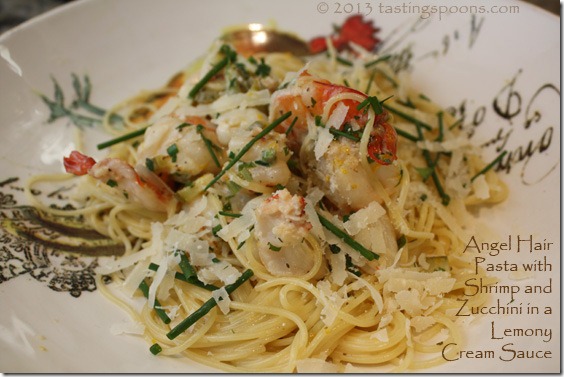

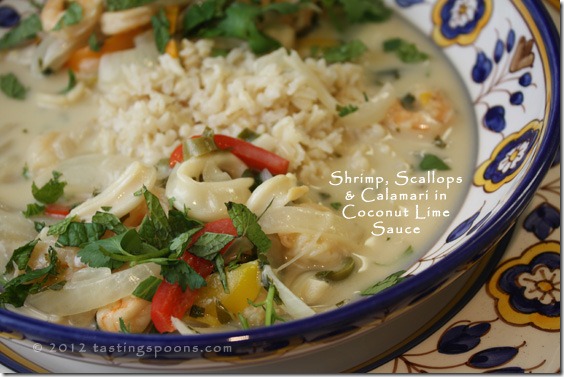
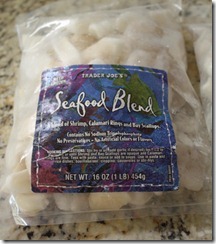
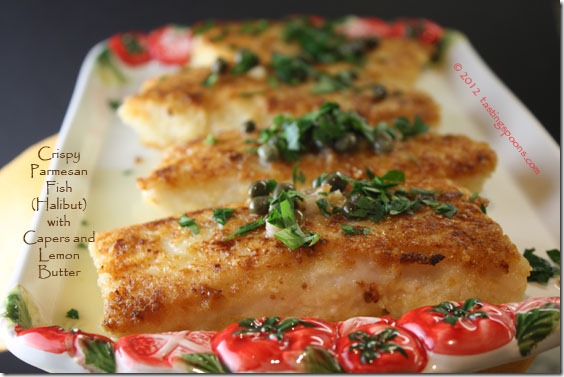
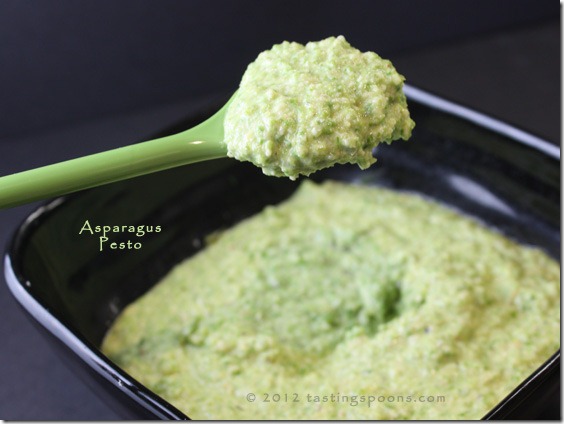
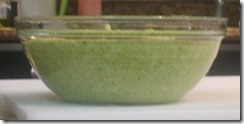
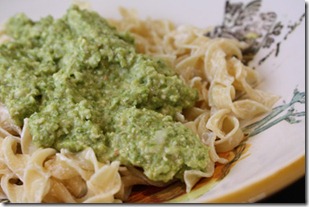
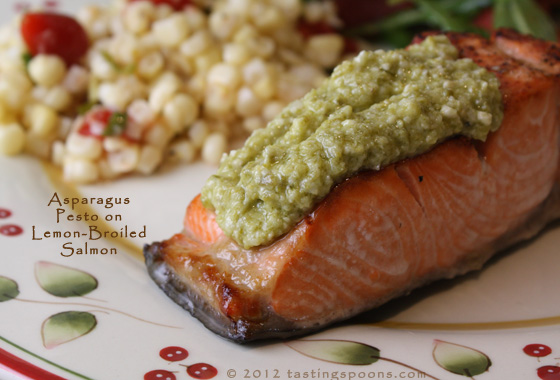
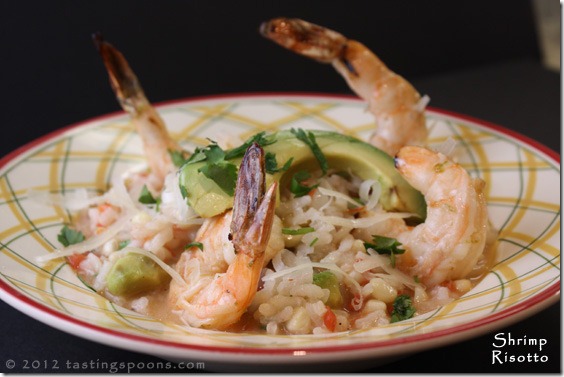
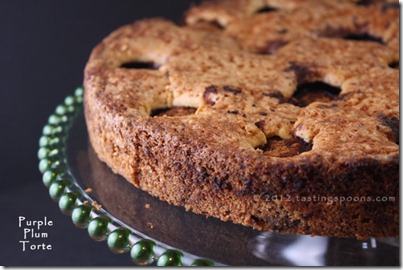
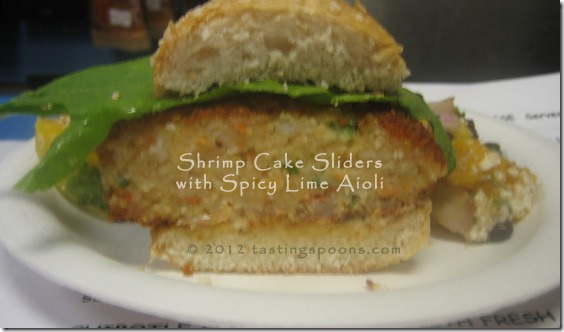
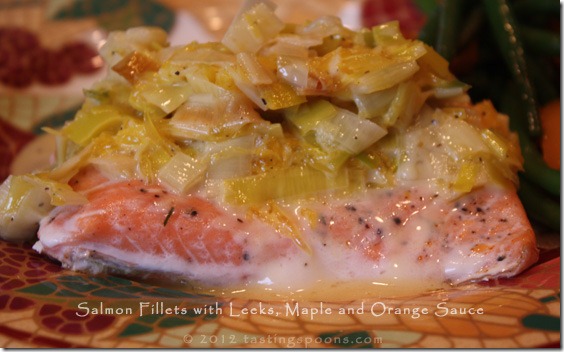
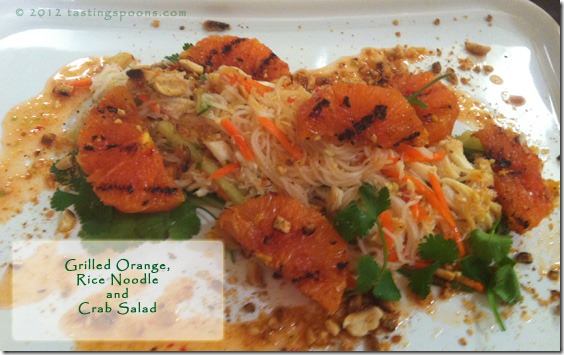
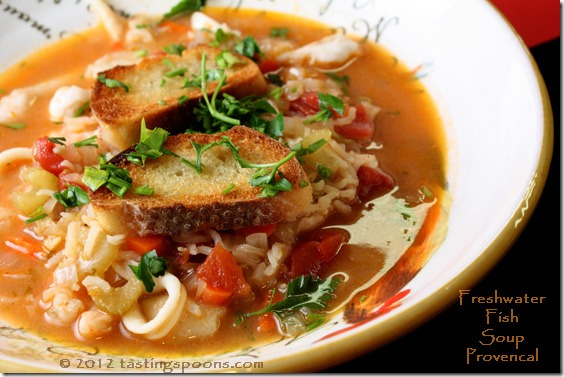
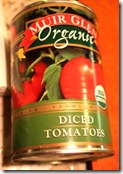
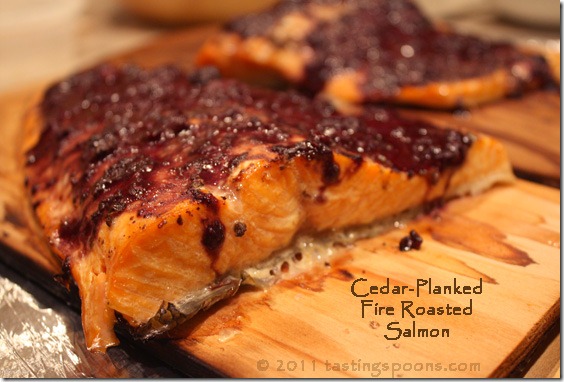
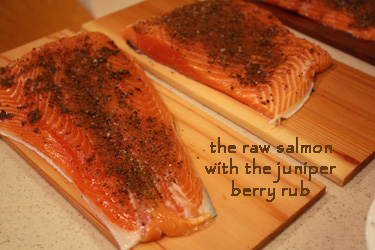
Leave a Comment!